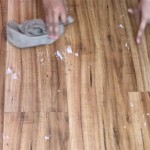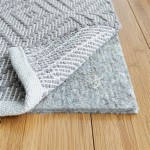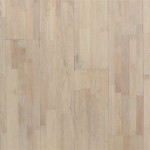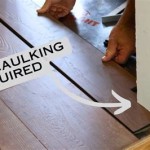Essential Aspects of Waterproofing Your Subfloor
Waterproofing a subfloor is a crucial step in safeguarding your home from moisture damage. Moisture can seep into the subfloor from various sources, such as leaks, spills, or rising damp. It can weaken the subfloor, leading to structural issues, mold growth, and other problems. To prevent these issues, it is essential to take measures to waterproof your subfloor.
Benefits of Waterproofing a Subfloor:
- Protects against moisture damage, preventing structural issues and mold growth.
- Increases the lifespan of the subfloor and flooring materials.
- Improves indoor air quality by preventing moisture-related problems. li>Adds value to your home by enhancing its durability and appeal.
Types of Waterproofing Membranes:
There are various types of waterproofing membranes available, each with its own advantages and applications. Some common options include:
- Asphalt-Modified Membranes: These are self-adhering membranes composed of asphalt and polymers. They are durable, flexible, and resistant to moisture and chemicals.
- Polyurethane Membranes: These are liquid-applied membranes that cure into a seamless, waterproof barrier. They are elastic, allowing them to withstand movement and cracking in the subfloor.
- Polyethylene Membranes: These are sheet membranes made of high-density polyethylene. They are moisture-resistant, but not as durable as other options.
Steps for Waterproofing a Subfloor:
- Prepare the Surface: Clean the subfloor thoroughly, removing any dirt, debris, or previous coatings. Ensure the surface is smooth and level.
- Apply Primer: Apply a primer to the subfloor to improve the adhesion of the waterproofing membrane.
- Install the Waterproofing Membrane: Roll out the waterproofing membrane over the primed surface. Overlap the edges by a minimum of 6 inches.
- Seal the Joints: Use waterproof tape or adhesive to seal the joints between the membrane sheets. Ensure there are no gaps or tears.
- Protect the Membrane: Cover the waterproofing membrane with a layer of protective material, such as plywood or cement board. This will prevent damage during flooring installation.
- In areas prone to moisture, such as bathrooms, kitchens, and basements.
- When installing moisture-sensitive flooring materials, such as hardwood or laminate.
- If there is a history of water damage in the subfloor or the surrounding area.
- As a precautionary measure in new construction or renovations.
When to Waterproof a Subfloor:
It is recommended to waterproof a subfloor in the following situations:
Conclusion:
Waterproofing a subfloor is an essential step in protecting your home from moisture damage. By understanding the benefits, types, and steps involved in waterproofing, you can make an informed decision about whether or not to waterproof your subfloor. Remember, waterproofing your subfloor is an investment that will safeguard your home and improve its longevity.

Waterproofing Subfloor Best Methods You Can Use Mellowpine

How To Waterproof A Floor The Home

Waterproofing Subfloor Best Methods You Can Use Mellowpine

Waterproofing Under Tile Things You Should Know

Basement Sub Floor Matting Options In Portland Bangor Rochester Maine Subfloor Systems Installed Me

How To Waterproof A Bathroom Floor Using Schluter Ditra Underlayment Over Wood Subfloor

Waterproofing Subfloor Best Methods You Can Use Mellowpine

What Is A Moisture Barrier And When It Needed For Flooring Inc

All In One Single Dimple Subfloor Sual
Should You Put A Subfloor In Basement Quora
See Also







